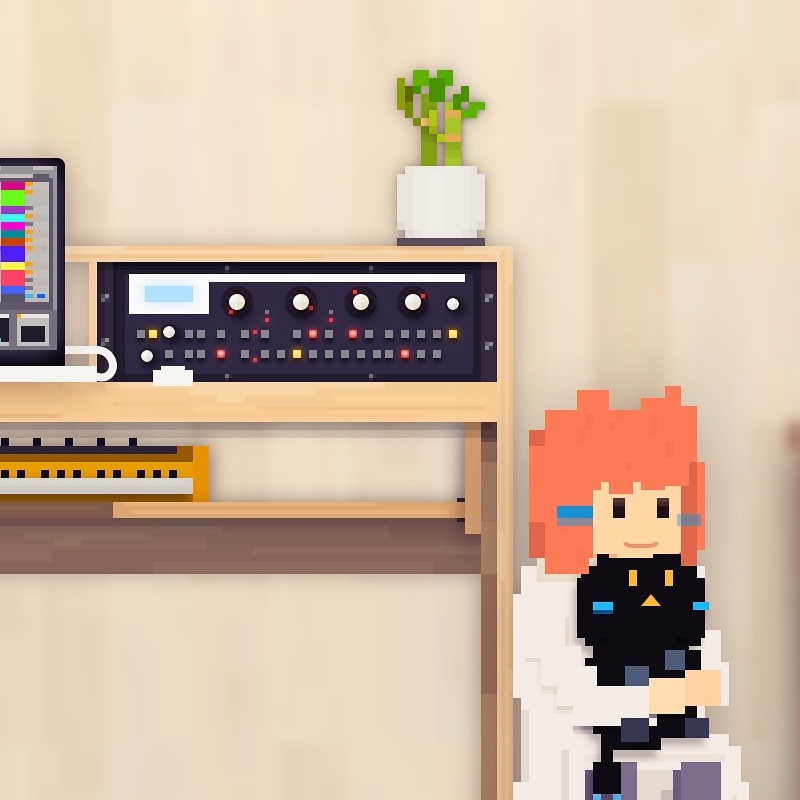Contents
Kernel of So
| Tendency | Very Weak |
|---|---|
| Stability | Stable |
| Role | Strength, height |
| Half-step Relation | none |
So is the note that can work as the second most stable “pillar”.
Use as the Highest Note
As Curwen described it as “GRAND” or “BRIGHT”, so is good at producing strong, cheerful or clean moods. as with the case of mi, melodies repeating so or combined with other stable tones can often be seen.
You’re sure to hear the powerful energy of so!
In “Catch My Breath” and “Sledgehammer”, so is successively repeated four times. In “What the Hell” and “You’re Beautiful”, all the three stable tones are connected like do–so–mi, resulting in very steady sounding melodies.
In “Domino” and “Take Me Home”, so acts as the starting point of a descending step chain, so–fa–mi–re.
Or in “Bad Day”, “Really Don’t Care” and “Welcome to New York”, re is used to make phrases like so–mi–re–do or so–re–do. Thus keeping fa out can reinforce the clear and solid mood provided by so.
Kernel of La
| Tendency | Medium |
|---|---|
| Stability | Unstable |
| Role | Lean to so / The boss in a minor key |
| Half-step Relation | none |
La is a medium tendency tone toward so, though it acts as the center tone in a minor key environment. So its use is very much dependent on which key a song is in.
Use as the Highest Note
In a minor key, la is the “CEO”. it evokes the sense of reaching the center in place of do. In a major key, on the other hand, a common use is to give a bit more push to melody lines where so acts as a temporal peak of a phrase. Like re–do or fa–mi, use la as the destabilizer of a melody.
“I Still Haven’t Found What I’m Looking For” perfectly illustrates the strategy of “a push”, where the phrases mi–so–mi and la–so–mi appear alternately. The first one is already have a sufficient energy by virtue of the skip motion of two stable tones but the unstable tone la surpasses it by “rocking” the melodic stability.
“Blinding Lights” is very similar to it; the impressive repetition of so–mi–re–do at first seems to be the climax of the part, but then an even more stronger phrase la–mi–re comes in.
“Kokomo” is the same; the phrase “That’s where we wanna go” gives a push in the final phase. It is also notable that the melodic accent corresponds to that of the sentence.
This, hopefully, makes a melody sound natural as if the singer is “talking” to you. Such relationship of words to music is called Prosody, which is another big subject of study.
Use in a Minor Key
In a minor-key-oriented environment, la is the final point of landing.
In all the cases above, the melody reaches la by ascending step, so–la.
Kernel of Ti
| Tendency | Strong |
|---|---|
| Stability | Unstable |
| Role | Produce instability |
| Half-step Relation | Above is do |
Ti is a strong tendency tone. The sample song above will sound very unstable!
Use as the Highest Note
Placing ti at the top of a melody line will be relatively rare since it primarily gravitates upwards to do; ti as the highest tone means that the ti resolves by descending motion, otherwise ti itself is the end of a phrase.
“Kyoto” is already explained in the earlier section. In the cases above, ti resolves either by two descending steps, ti–la–so or directly skip to so.
“Rolling in the Deep” is different from the others in that it’s in a minor key environment; it starts with a long tone of la, the center. And to “give a push”, ti is used in the key phrase “rolling in the deep”.
3. The importance of Kernel
Referring to many examples, you (hopefully) hear the difference between kernel functions of tones and you also see how the melodies of hit songs are cleverly structured.
The composers, however, would not have written “blueprints” for their songs. They have learned such characteristics of tones from experience, and can conceive a “spontaneous vision” of melodies they want to make. Yet it doesn’t mean that it is a waste to learn music theory, for the theoretical understanding of music will greatly help you to understand them physically.
And as you can see, there’s no hierarchy like one is particularly better than the others. Do can produce fulfillment, to which re adds more floatation, whose appeal is enhanced by mi, with which fa makes a more emotional resolution, which is overtaken by the grandness of so, to which la gives a push, which is accented by ti, whose instability is best released by ascending step to do! It’s like a Ferris wheel where all the “wagons” have a chance to climb to the top.
Therefore, There can be no judgements like “good” or “bad” in an absolute sense. The only evaluation criterion is what best “fit” in a specific situation, fit for what you’re trying to create.
Remember that your self-expression comes first. Music theory is the support tool to actualize what you have in your mind without loss as much as possible, the rationality to bring your sensibility into shape.
Kernel is the core concept of melody theory in this text. It takes you some time to master this (hear the difference of tones and utilize them just with your feelings), but you can make use of it to analyze songs any minute from now. Reviewing your favorite songs from the viewpoint of kernels will bring you new insights.
Summary
- A tones is given a distinct roll within a key, which is termed a kernel in LMT.
- Utilizing kernels for melodic expressions is an important skill in songwriting.

